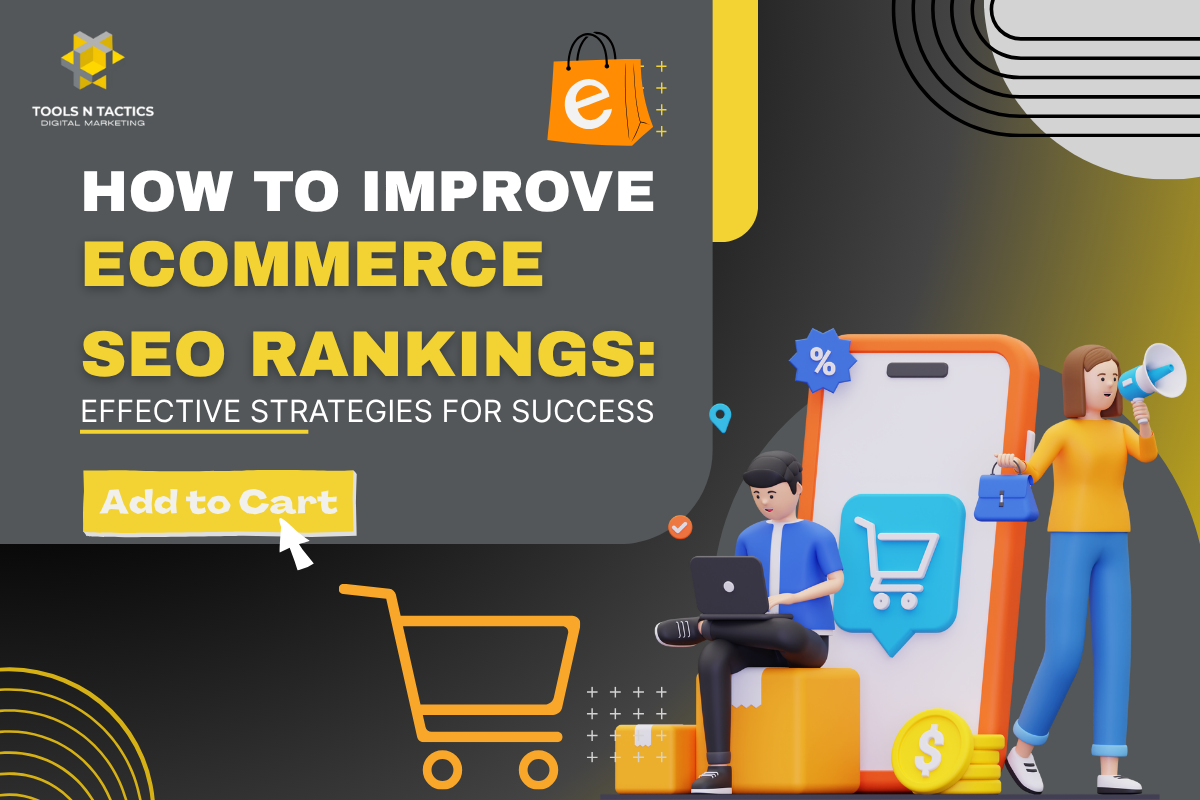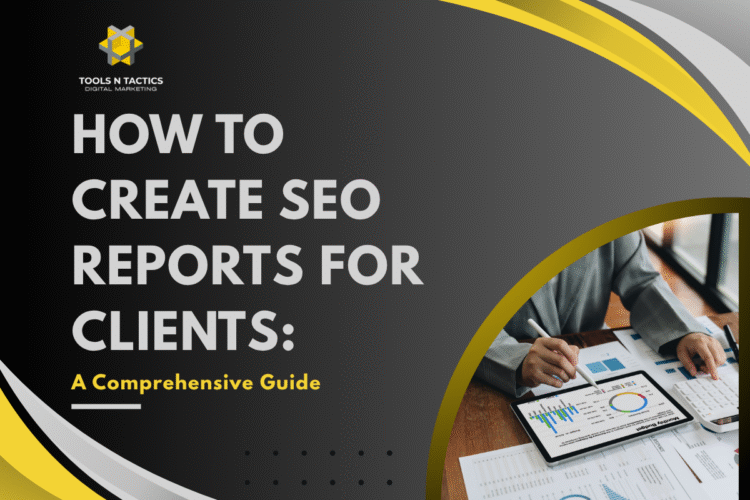

Improving your e-commerce SEO rankings can seem daunting, but it is crucial for driving organic traffic to your store. By implementing strategic SEO practices, you can enhance your site’s visibility and attract more potential customers actively searching for your products. Focusing on aspects like keyword optimization, site structure, and quality content can make a significant difference in how search engines evaluate and rank your e-commerce site.
Start by optimizing your product pages with relevant keywords and high-quality images. Craft compelling descriptions that not only inform but also engage your audience. Regularly updating your content and utilizing technical SEO best practices will further enhance your rankings, ensuring that your e-commerce store is well-positioned to compete in a saturated market.
Monitoring your performance is equally important. Utilize analytics to track changes in your rankings and organic traffic. Adjust your strategies based on these insights to continuously improve and stay ahead of the competition in the ever-evolving world of e-commerce.


Mastering Keyword Research and User Intent
Effective keyword research is crucial in enhancing your eCommerce SEO rankings. Understanding user intent allows you to connect with your audience and meet their needs through targeted keywords. Below are the essential aspects of mastering this process.
Finding High-Intent Keywords
Identify high-intent keywords to connect with customers ready to make a purchase. These keywords reflect strong buyer intent, such as “buy”, “order”, or “discount”. Use tools like Google Keyword Planner or SEMrush to find relevant terms.
Start by entering broad categories related to your products to discover specific search queries. Analyze the search volume and competition levels to select keywords that attract quality traffic. A focus on transactional keywords will help ensure your content aligns with user needs and drives conversions.
Leveraging Long-Tail Keywords
Long-tail keywords are phrases typically consisting of three or more words. They often indicate a higher level of intent. For instance, instead of targeting “shoes”, consider “buy running shoes for flat feet”.
These keywords are less competitive, allowing you to rank more easily in search results. Implementing long-tail keywords in your product descriptions, blog posts, and meta tags can attract a more specific audience. Use tools like Ahrefs to analyze long-tail opportunities based on search queries and user behavior.
Analyzing Competitor Keywords
Analyzing the keywords your competitors are targeting helps you identify gaps and opportunities in your SEO strategy. Use tools such as SEMrush or Ahrefs to perform a competitive analysis.
Look for keywords that drive significant traffic to competitors’ sites but are not optimized on yours. This insight can guide your content creation, allowing you to fill those gaps effectively. By understanding their keyword choices, you can refine your strategy to capture missed opportunities for higher visibility and increased conversions.


Optimizing Product Pages and Content
To enhance your eCommerce SEO rankings, optimizing product pages is essential. Focus on creating unique content and structuring it effectively to engage both users and search engines. This involves distinct product descriptions, strategic product titles, and careful management of content, including image alt text.
Unique Product Descriptions
Unique product descriptions differentiate your offerings from competitors. Avoid generic or duplicated text, as search engines prefer original content. Aim for a word count between 150-300 words that highlights features, benefits, and potential uses of the product.
Incorporating relevant keywords naturally enhances discoverability. Consider using bullet points for readability, enabling customers to grasp essential details quickly. Think about including customer reviews within product descriptions to provide social proof, which can increase trust and conversion rates.
Product Titles and Meta Descriptions
Product titles and meta descriptions play a critical role in search visibility. Your product title should be clear, concise, and include primary keywords that reflect the product’s purpose. Aim for around 60 characters to ensure it displays fully in search results.
Meta descriptions should summarize the product in 150-160 characters, enticing users to click. Use action-oriented language to engage potential customers. Test various phrasing to see what performs best. A well-optimized title and meta description together increase click-through rates, ultimately boosting rankings.
Managing Duplicate Content
Duplicate content can hinder your SEO efforts, confusing search engines and diluting your ranking potential. To prevent this, create unique URLs for each product variant, especially if they differ in size or color.
Utilize canonical tags to indicate the original version of content if duplication is unavoidable. Check for duplicate content regularly using tools like Copyscape or Google Search Console. Being proactive in addressing duplicates ensures that your product pages remain effective and rank higher in search results.
Enhancing Image Alt Text
Image alt text enhances accessibility and improves SEO. This text provides context for search engines and helps visually impaired users understand images on your product pages. Keep the alt text descriptive and relevant to each image.
Incorporate primary keywords where appropriate, but avoid keyword stuffing. A good practice is to describe the product and its key features in about 125 characters. This approach not only aids in SEO but also boosts user experience, contributing to higher engagement levels on your pages.
Site Architecture and Internal Linking
Creating a robust site architecture and implementing effective internal linking strategies are crucial for enhancing your e-commerce SEO rankings. These components improve user experience, ensure that your site is crawlable by search engines, and distribute link equity effectively across your website.
Building Effective Navigation
A well-structured navigation system is essential for enhancing user experience and SEO. Ensure that your main categories and subcategories are logical and intuitive. Utilize a simple, clean layout, allowing users to find products quickly.
Consider using a horizontal navigation bar with dropdown menus for subcategories. This technique enhances visibility and accessibility. Aim for no more than three clicks to reach any page, keeping users engaged and reducing bounce rates.
Incorporate HTML site navigation alongside any JavaScript-based solutions. This approach ensures the structure is crawlable by search engines. Clear labels and organized hierarchy help guide users, allowing them to explore products seamlessly.
Implementing Breadcrumbs
Breadcrumb navigation improves navigation and helps users understand their location within your site. This feature enhances user experience and provides a secondary navigation method. Implementing a structured breadcrumb list schema can also benefit SEO.
Utilize structured data markup to enhance your breadcrumbs, making it easier for search engines to index your site. Each breadcrumb should link back to a higher category, establishing clear pathways for both users and search engines.
This method not only aids navigation but also allows search engines to discover and rank your pages more effectively. Clear breadcrumb paths encourage users to explore further, potentially increasing conversion rates.
Strategic Internal Links
Internal linking is vital for distributing authority and guiding users through your site. Incorporate contextual internal links within product descriptions and blog posts to enhance related content visibility.
Highlighting related product links can lead to upselling opportunities and higher conversion rates. Additionally, a strategic approach to internal linking helps search engines understand your site’s structure and hierarchy.
Employ tools like Semrush to audit your internal links, identifying broken links or opportunities for improvement. Consider using anchor text that is descriptive and relevant to the linked content, improving clarity for users and search engines alike. This practice supports your technical SEO efforts and can significantly improve your rankings.
Improving Technical SEO and Website Performance
To enhance your eCommerce SEO rankings, focus on optimizing technical aspects and improving website performance. This involves ensuring fast load times, meeting web vitals standards, fixing site errors, and utilizing analytics tools effectively.
Boosting Site Speed
Site speed is vital for retaining visitors and increasing conversions. A delay of just one second can lead to higher bounce rates. To optimize loading times, implement browser caching and use a Content Delivery Network (CDN) to distribute your content efficiently. Compress images and minify CSS and JavaScript files for faster loading. Utilize tools like Google PageSpeed Insights to analyze your site’s performance and identify areas for improvement.
Core Web Vitals Optimization
Google’s Core Web Vitals focus on user experience and are critical for SEO. Key metrics include Largest Contentful Paint (LCP), which measures load time, First Input Delay (FID) for interactivity, and Cumulative Layout Shift (CLS) for visual stability. Aim for an LCP of under 2.5 seconds, an FID of less than 100 milliseconds, and a CLS score below 0.1. Regularly check and optimize these metrics to enhance user experience and boost search rankings.
Eliminating Broken Links and Redirect Chains
Broken links and redirect chains can harm your site’s SEO and user experience. Use tools like Screaming Frog or Sitebulb to identify these issues. Ensure all links lead to existing pages and minimize the use of redirects to maintain page authority. Regularly audit your website to catch and eliminate broken links. This practice not only improves performance but also build trust with your users.
Leveraging SEO Tools and Analytics
Utilizing the right SEO tools and analytics is essential for monitoring and improving your website’s performance. Google Analytics and Google Search Console provide valuable insights into user behavior and site traffic. Use these tools to track key performance indicators (KPIs) such as traffic sources and user engagement metrics. These data points can guide your strategy and highlight areas for additional focus, ensuring that you are adapting effectively to your audience’s needs.
Mobile Optimization and User Experience
Enhancing mobile optimization directly impacts user experience, crucial for retaining customers. Key factors include responsive design, streamlined navigation, and mobile-first indexing practices, which together improve usability and encourage mobile shopping.
Responsive Design for Mobile Shopping
A responsive design adapts your e-commerce website to various screen sizes, ensuring a seamless experience on smartphones and tablets. This adaptability not only affects aesthetics but also plays a significant role in mobile SEO.
Utilize flexible grid layouts and scalable images to maintain clarity without compromising performance. This approach helps in retaining users, as non-responsive sites often lead to high bounce rates.
Additionally, Google’s algorithms favor responsive sites in search rankings. Investing in responsive design can lead to an increase in traffic and conversions, effectively enhancing your user experience while driving sales.
Streamlining Mobile Navigation
Clear and intuitive navigation is vital for mobile shopping. Users should easily find products without feeling overwhelmed. Focus on simplifying your menu structure and utilize expandable menus or icons for a cleaner interface.
Consider implementing a search bar prominently within your layout, allowing quick access to products or information. Prioritize the use of large buttons for easy tapping and ensure that content is scrolled vertically rather than horizontally to enhance usability.
Using breadcrumbs can also help users understand their location on your site, improving their overall navigation experience. This strategy encourages longer engagement, which can significantly boost your conversions.
Mobile-First Indexing Best Practices
With the rise of mobile users, Google employs mobile-first indexing, meaning it predominantly uses the mobile version of your site for ranking and indexing. To align with this practice, ensure your mobile site contains all essential content that appears on the desktop version.
Optimize load times using tools like AMP (Accelerated Mobile Pages) to reduce bounce rates and improve engagement. Regularly check and fine-tune your site’s performance to ensure it meets mobile standards.
Also, focus on providing a rich media experience with mobile-friendly content. Images and videos should load swiftly and display correctly on any device. Enhancing these aspects will serve to bolster your mobile SEO efforts and improve visibility in search results.
Advanced Strategies and Enhancing Visibility
Enhancing your eCommerce SEO rankings requires advanced strategies that focus on technical improvements and user engagement. This section explores methods to leverage schema markup, encourage customer reviews, build backlinks, and optimize for voice search to increase visibility in search results.
Implementing Schema Markup and Rich Snippets
Utilizing schema markup is crucial for improving how your products are displayed in search engine results pages (SERPs). By implementing structured data, such as product schema markup and FAQ schema, you enhance your website’s understanding by search engines.
Rich snippets created through schema markup can dramatically increase your click-through rate (CTR) by providing additional information like star ratings, prices, and availability directly in the search results. This visibility not only improves user experience but can also lead to higher conversion rates. Prioritize adding review schema to showcase customer feedback prominently, encouraging trust and engagement.
Encouraging Customer Reviews
Customer reviews significantly impact your eCommerce store’s visibility and credibility. Actively encouraging satisfied customers to leave positive reviews can improve your rankings in SERPs. Reviews are also essential for building social proof.
You can gather reviews using post-purchase follow-ups, providing incentives, or integrating review systems directly on your product pages. Highlighting reviews on your website and in your marketing materials can enhance consumer confidence, leading to higher conversion rates. Don’t hesitate to respond to all reviews—positive or negative—as engaging with customers demonstrates commitment.
Boosting Domain Authority with Backlinks
Backlinks play a vital role in enhancing your domain authority. A strong backlink profile helps improve search rankings, making your site more competitive. Focus on building high-quality backlinks from reputable sites relevant to your niche.
You can achieve this through guest blogging, partnerships, and digital PR campaigns. When securing backlinks, prioritize quality over quantity; one link from a high-authority site is more valuable than several links from less reputable sources. As your domain authority increases, expect a boost in visibility and organic traffic.
Optimizing for Voice Search
As voice assistants like Alexa, Siri, and Google Assistant become more prevalent, optimizing for voice search is essential. Recognizing that voice queries differ from traditional searches can help you adapt your SEO strategy.
Focus on natural language and long-tail keywords that reflect how users phrase questions. Implementing structured data can also improve the chances of your content being chosen as a response to voice queries. Ensuring your website loads quickly and is mobile-responsive further enhances the user experience, which is a critical factor in voice search optimization.
Frequently Asked Questions
E-commerce SEO can seem daunting, but understanding the essential elements and strategies can significantly enhance your site’s visibility. This section addresses common questions to help you navigate the complexities of SEO for your online store.
What are the essential elements of an e-commerce SEO checklist?
An effective e-commerce SEO checklist includes key components such as keyword research, optimization of product descriptions, image alt text, site speed, mobile responsiveness, and user experience. Additionally, focus on technical SEO aspects like XML sitemaps, canonical tags, and structured data to improve search rankings.
What are effective strategies to enhance SEO for e-commerce sites?
To boost SEO for your e-commerce site, employ strategies like optimizing product pages with relevant keywords, creating unique and engaging content, utilizing customer reviews, and building high-quality backlinks. Incorporating content marketing such as blogs and guides can attract more organic traffic.
How can Google Search Console be used to improve an e-commerce site’s SEO?
Google Search Console allows you to monitor your site’s performance in search results. You can identify which keywords are driving traffic, check for crawl errors, and submit sitemaps. Use this data to adjust your strategies and improve your site’s visibility on search engines.
What SEO basics should beginners know when managing a Shopify store?
As a beginner managing a Shopify store, knowing the importance of keyword integration in product titles and descriptions is crucial. Additionally, familiarize yourself with Shopify’s built-in SEO features, such as optimizing page titles and meta descriptions, and ensuring your site loads quickly.
What steps are involved in a comprehensive SEO process for a website?
A comprehensive SEO process involves several steps: conducting a detailed site audit, performing keyword research, optimizing on-page elements, enhancing technical SEO aspects, creating quality content, and building backlinks. Regularly analyze performance metrics to refine your approach.
How does SEO work, and what are its key components?
SEO works by optimizing your website to rank higher on search engine results pages, thereby increasing organic traffic. Key components include keyword optimization, content quality, site structure, backlinks, and user experience. Understanding these elements can guide your efforts in boosting visibility.
Boost Your Ecommerce SEO Rankings Today with Tools ’N Tactics
Ready to take your online store to the next level? Our SEO experts at Tools ’N Tactics craft data-driven strategies that increase visibility, traffic, and sales.
Optimize your product pages, improve your rankings, and grow your brand with proven ecommerce tactics that deliver results.
Book a Free SEO Consultation and start improving your ecommerce SEO rankings today.




